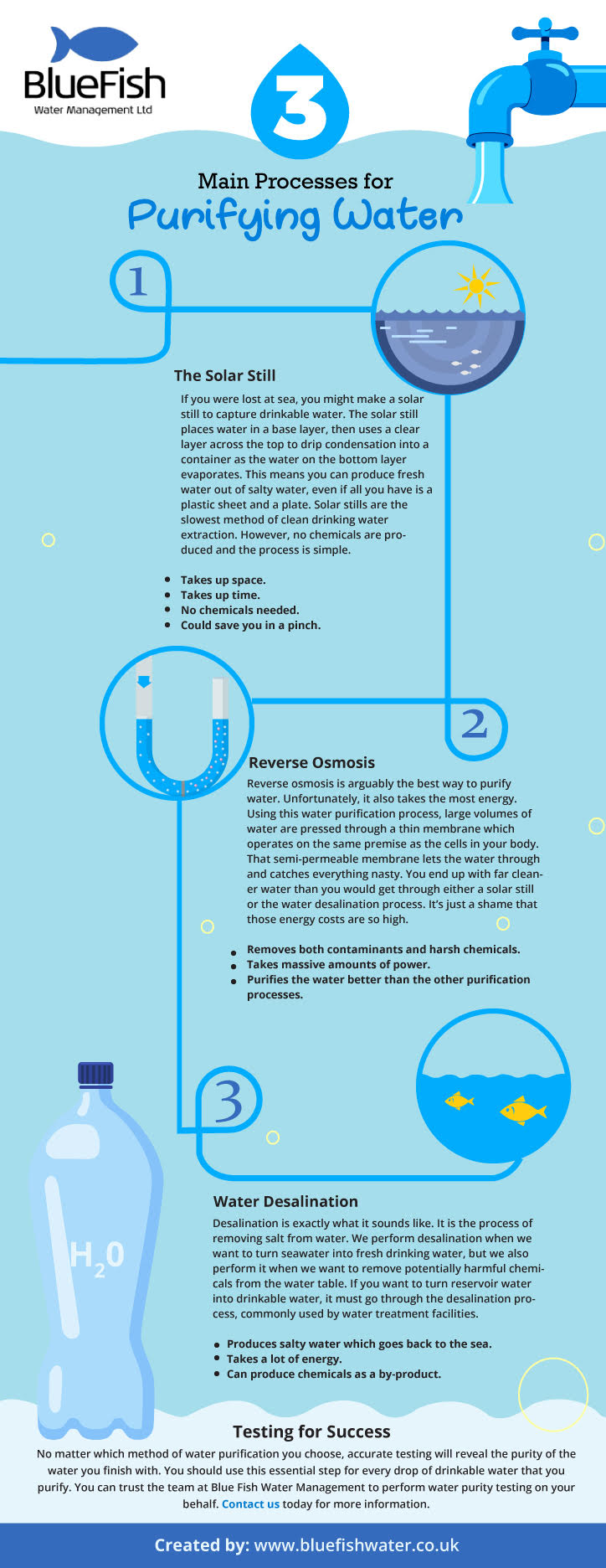We live on a planet covered by vast oceans covering two-thirds of its surface. Without water purification, most of it is unsafe to consume.
Using water purification processes, we can make dirty water clean again, but when did humans begin to use them?
We can understand the water purification processes we use today by looking back at its history.
Dirty water can kill us
Our history of water purification is based on the assumption that dirty, salty, or contaminated water can make us sick, or even kill us.
Seeing the deaths and illnesses caused by unclean water prompted our early ancestors to take steps to remove those contaminants, potential parasites, and unsafe bacteria.
A short summary of water purification history
Though it is said that humans constructed simple water filters as early as 4,000 years ago, no records of them exist.
The first recorded description of a water filter was written by Hippocrates in 370 BC. He used a sleeve of black cloth to filter his water and make it clear at a time when others were still relying on barrels to collect rainwater, which eventually became contaminated.
As we evolved from the misconception that clear water was safe to drink, wells were built prior to the Roman era and remain evident today.
It was discovered that humans were significantly less likely to become ill when drinking water from a well.
Well, water is naturally filtered and the water below the surface is less likely to be contaminated. It’s possible that humans learned this behaviour by observing animals.
Later, the Romans invented plumbing and built up an impressive network of aqueducts to transport water throughout the land.
The Three Modern Types of Water Purification Process
After this, we developed desalination, and then reverse osmosis, and finally solar stills – and not necessarily in that order.
Here is a short overview of three modern water purification processes, which shed light on the challenges faced by water companies today.
Reverse Osmosis
Reverse osmosis is a sophisticated version of Hippocrates’ straining technique. This method was invented in 1748 by Jean-Antoine Nollet, a French priest.
Reverse osmosis involves forcing large amounts of water through a semi-permeable membrane. This method requires a lot of energy, but it eliminates contaminants, chemicals, salt, and anything else that is not water.
Although no water purification system is foolproof, reverse osmosis comes pretty close.
Desalination
The UK predominantly obtains its water supply from desalination plants. Desert regions also use this desalination process to extract potable drinking water from the sea.
This purification process involves the use of chemicals to remove salt, contaminants, and particles from the water.
Desalination has also been adapted for agricultural use. Although desalination plants are seen as essential, their release of brine into the oceans has caused serious ecological concerns.
Solar Stills
The last method for obtaining clean drinking water is using solar distillation. Large-scale operations rely on sunlight and a transparent membrane to make water.
Seawater and contaminated water are placed at the bottom level, where they can evaporate. As it condenses, the water is collected in a reservoir and becomes safe to drink.





